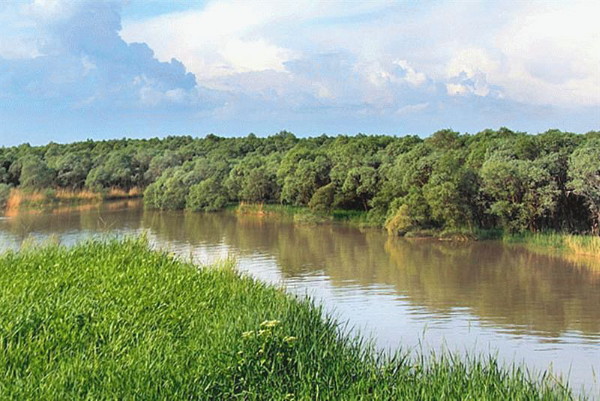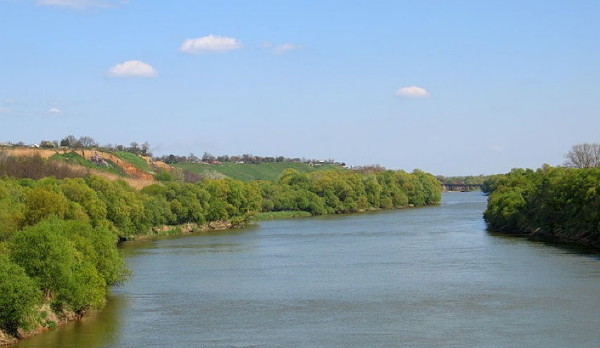Kuban River
Kuban River [річка Кубань]. River in Krasnodar krai (the Kuban region) and Stavropol krai in the Russian Federation. It is the longest river in Northern Caucasia (approximately 870 km) and drains approximately 57,900 sq km. It originates with the Ullukam and Uchkulan rivers, which arise from glaciers on Mount Elbrus in the Caucasus Mountains, and flows to the Sea of Azov. Its upper part (to Nevinnomyssk) runs northwest and is a typical mountain river flowing quickly through narrow gorges with many rapids. Near Nevinnomyssk a dam (built in 1948) leads some water into the Nevinnomyssk Canal. Farther down its course, the river encounters the Stavropol Upland and turns west. From there it meanders slowly through the Subcaucasian steppe. It contains many small islands and sandbanks and runs through marshy floodplains. The Protoka River branches off on the right bank approximately 116 km from the Kuban’s mouth. At its mouth, the river forms a large marshy delta. All its main tributaries—the Teberda River, the Malyi Zelenchuk and Velykyi Zelenchuk Rivers (see Zelenchuk rivers), the Urup River, the Laba River, the Bila River (Kuban), and the Pshysh River—are left tributaries. The Kuban reaches its highest water level in the summer, when it is fed by melting snow and glaciers in the Caucasus Mountains. The river is regulated by the Tshchytske, Shapsuhske, and Krasnodarske reservoirs and much of its water is diverted for irrigation. It is navigable from the mouth to to Ust-Labynsk and is ice-free 340–350 days a year. The Kuban is rich in fish, especially carp, perch, and pike, and its large delta serves as a nesting place for many species of birds. The main cities on the river are Cherkessk, Nevinnomyssk, Armavir, Kropotkin, Ust-Labynsk, Krasnodar, and Sloviansk-na-Kubani.
[This article originally appeared in the Encyclopedia of Ukraine, vol. 2 (1988).]

